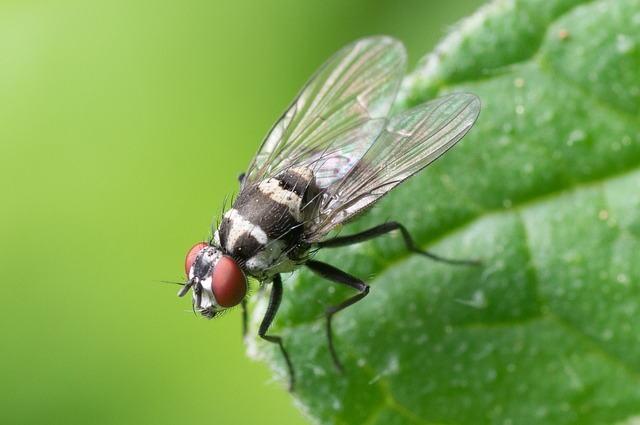Fly infestations in residential and commercial areas are addressed through professional fly control services. These services employ strategies like sanitation, sealing gaps, and targeted treatments to disrupt breeding cycles. Chemical insecticides offer swift results but raise environmental concerns, while non-chemical methods provide eco-friendly alternatives. Specialized equipment locates hidden nests for thorough eradication, breaking the breeding cycle and preventing future infestations. Regular inspections, prompt action, and a multi-pronged approach focusing on long-term fly control services are key to effective fly population management.
Tired of swatting flies? Infestations can be a nuisance, but effective solutions exist. This guide explores comprehensive strategies to eliminate fly populations, from understanding common types and causes to comparing chemical and non-chemical methods for optimal fly control services. Learn about targeted treatments for locating and eradicating nests, as well as preventive measures for long-term fly management.
Understanding Fly Infestations: Common Types and Causes
Fly infestations can be a significant nuisance, with various species of flies causing issues in both residential and commercial settings. Understanding these infestations is the first step to effective control. Common types include house flies, fruit flies, and phorid flies, each with distinct habits and breeding preferences. House flies are versatile and breed in decaying organic matter, while fruit flies are attracted to ripened fruits and vegetables. Phorid flies prefer moist environments and often invade buildings through tiny cracks.
Causes of fly infestations range from poor sanitation to structural gaps. Organic waste, food debris, and untidy environments create breeding grounds for flies. Gaps around doors, windows, and pipes provide entry points, allowing flies to access indoor spaces. Professional fly control services employ a multi-faceted approach, including sanitization, sealing entry points, and targeted treatments to eliminate adult flies and disrupt their breeding cycles.
Chemical vs Non-Chemical Solutions for Effective Fly Control Services
When it comes to tackling fly infestations, businesses often face a choice between chemical and non-chemical solutions for effective fly control services. Chemical treatments, including insecticides and pesticides, offer swift results by targeting flies directly. These methods are highly effective in killing flies on contact, making them a go-to option for immediate relief. However, concerns about environmental impact and potential health risks to employees and customers may arise, prompting a closer look at alternative approaches.
Non-chemical solutions, such as biological control, sanitation, and mechanical traps, present eco-friendly and safer alternatives. Biological control involves introducing natural predators like spiders or ladybugs to target flies. Sanitation plays a crucial role by removing fly breeding grounds, such as waste and organic matter. Mechanical traps, including sticky traps and light traps, physically capture flies without resorting to chemicals. These non-chemical methods not only reduce environmental and health risks but also offer long-term sustainability for fly control services.
Targeted Treatments: Locating and Eradicating Fly Nests
Fly infestations can be a persistent and annoying problem, but targeted treatments offer an effective solution. The first step in eliminating flies is to locate their nests. Professional fly control services employ specialized equipment and expertise to identify hidden nests, often found in dark, secluded areas like walls, attics, or under debris. Once located, these nests are carefully treated using targeted pesticides or biological agents, ensuring a thorough eradication.
By targeting the nest, fly control services can break the breeding cycle and prevent further infestations. This method is particularly crucial for commercial spaces, as it helps maintain a hygienic environment. Regular inspections and prompt action are key to managing fly populations effectively, allowing businesses to operate without distraction from these pesky intruders.
Preventive Measures: Long-Term Strategies for Fly Management
Preventing fly infestations is a proactive approach that involves implementing long-term strategies for effective fly control services. Maintaining good hygiene and sanitation practices is fundamental to deterring flies from breeding grounds. Regularly cleaning and sanitizing areas prone to fly accumulation, such as trash receptacles, food preparation surfaces, and drainages, can significantly reduce their population. Ensuring proper waste management by promptly removing organic matter and utilizing suitable waste disposal methods further discourages fly activity.
Additionally, sealing entry points and gaps in structures helps prevent flies from entering. This includes fixing broken windows, securing screens, and sealing cracks around doors or plumbing fixtures. Implementing these measures creates a less hospitable environment for flies, breaking their life cycle and effectively managing infestations over time.
In addressing fly infestations, a multifaceted approach combining chemical and non-chemical solutions, targeted treatments, and preventive measures offers the most effective long-term fly control services. By understanding the common types and causes of these pests, you can implement strategies to locate and eradicate nests while preventing future invasions. This holistic method not only provides immediate relief but also ensures a cleaner, healthier environment for both people and pets.
